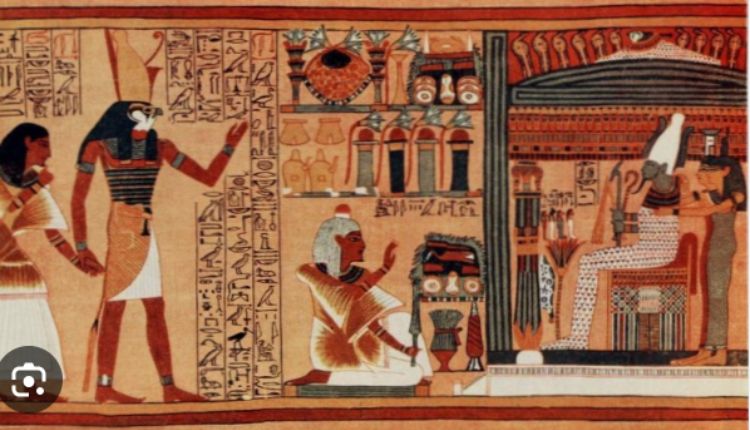Introduction:
The Celtic civilization, an ancient and mysterious culture that thrived in Western Europe during the Iron Age, left an indelible mark on history through its rich mythology, unique rituals, and deep-rooted spiritual beliefs. The Celtic religion, steeped in the connection between nature and the divine, provides a captivating window into the lives and minds of these enigmatic people. In this article, we will delve into the depths of Celtic religious practices, exploring their pantheon of gods and goddesses, sacred rituals, and the enduring legacy they have left on contemporary spirituality.
I. The Celtic Pantheon: Gods And Goddesses Of Nature
The foundation of Celtic religion was deeply tied to the reverence of nature and its various elements. The Celts believed in a pantheon of gods and goddesses, each presiding over different aspects of life, ranging from war and fertility to craftsmanship and wisdom. Among the most prominent deities were:
- Dagda: The All-Father, associated with fertility, abundance, and the cycle of life and death.
- Morrigan: The goddess of war, death, and prophecy, often depicted as a crow or raven.
- Brigid: The goddess of poetry, healing, and smithcraft, embodying the concept of triple aspects.
- Cernunnos: The horned god of the forest, symbolizing the wild and untamed forces of nature.
The Celtic deities were not distant and unapproachable figures; instead, they were intimately connected with the lives of the people. Celts often sought their favor through offerings and sacrifices, performed by skilled druids who acted as intermediaries between the human and divine realms.
II. Sacred Rituals And Festivals: The Cycle Of Seasons
The Celtic religion revolved around the cyclical nature of life, with seasonal changes playing a significant role in their spiritual practices. The solstices and equinoxes were celebrated as pivotal points in the agricultural calendar, marking transitions between the different seasons. Two of the most well-known festivals were:
- Beltane: Celebrated on May 1st, Beltane marked the beginning of the summer season. It was a time of purification, fertility rituals, and the lighting of bonfires to honor the sun and protect against malevolent forces.
- Samhain: Commemorated on November 1st, Samhain ushered in the winter season. It was believed that during this time, the boundaries between the living and spirit worlds were porous, allowing communication with departed ancestors.
In addition to these seasonal celebrations, the Celts also performed rites of passage, such as birth and marriage rituals, which played crucial roles in the lives of individuals and the cohesion of the community.
III. Spiritual Beliefs And Symbolism: The Otherworld And Sacred Sites
Central to Celtic religion was the belief in the Otherworld, a realm that coexisted with the mortal world but remained hidden from ordinary human perception. This ethereal realm was a place of eternal youth, abundance, and joy, serving as the ultimate destination for the souls of the departed.
The Celts had a profound connection with their environment, and certain landscapes held special significance as sacred sites. Dense forests, rivers, lakes, and hills were believed to be dwelling places for spirits and deities, making them crucial locations for religious ceremonies and offerings.
IV. The Enduring Legacy Of Celtic Spirituality
The decline of the Celtic civilization and the rise of Christianity led to the gradual waning of the ancient Celtic religion. However, traces of Celtic spirituality persisted through the fusion of pagan traditions with Christian practices, resulting in unique syncretic beliefs. Even today, remnants of Celtic mythology and symbols continue to influence various modern spiritual movements, especially among those seeking a deeper connection with nature and their ancestral roots.
Conclusion:
The world of Celtic religion offers a captivating glimpse into a civilization deeply attuned to the rhythms of nature and the mysteries of the divine. Their pantheon of gods and goddesses, sacred rituals, and profound spiritual beliefs shaped the lives of the ancient Celts and continue to intrigue and inspire contemporary generations. As we unravel the enigmatic threads of Celtic spirituality, we discover a timeless legacy that celebrates the interconnectedness of humanity, nature, and the cosmos.
FAQs:
- Q: Were the Celtic gods and goddesses immortal? A: Yes, according to Celtic belief, the gods and goddesses were immortal beings who existed beyond the mortal realm. They were associated with eternal aspects of nature and life.
- Q: Did the Celts have a written religious scripture? A: The Celts did not have a unified written religious scripture as we understand it today. Much of their religious knowledge and myths were passed down orally through generations by druids and bards, contributing to the rich and diverse tapestry of Celtic mythology.











